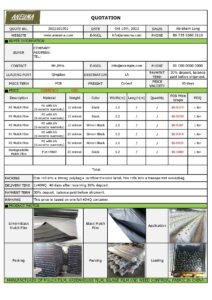Spring is an excellent time to plant watermelons. Our key worry while utilizing watermelon film is its light transmittance and if it can match its growing requirements. So, how can the light transmittance of the watermelon special film be improved so that the watermelon may acquire a more sufficient light effect and grow better?
Spring is a fantastic time for everything to grow, and light is also essential for plants. Watermelon film should be applied to help the watermelon develop faster. Watermelon film, when applied appropriately, can increase watermelon development; but, when used incorrectly, it can inhibit watermelon growth. So try to use new watermelon film, because the light transmittance of old watermelon film is inherently low, and there is no way to compare it to the new one.
When using the watermelon special film, constantly clean the dust from the outside layer. After all, it was outside, and there was a lot of dust outside. If it collects for an extended period of time, the outer layer of the watermelon film will get dusty, reducing light transmission, therefore wipe the dust outside.
Clean off the dew on the watermelon film as soon as possible to avoid interfering with the light transmission of the greenhouse film. In most cases, there will be dew at night. Its light transmittance will be considerably reduced if it is not cleaned during the day.
Because the light transmittance of the watermelon film is better suited for watermelon use, it is required to modify its external conditions and clear the dust and dew on it on a regular basis to optimize the light transmittance.

